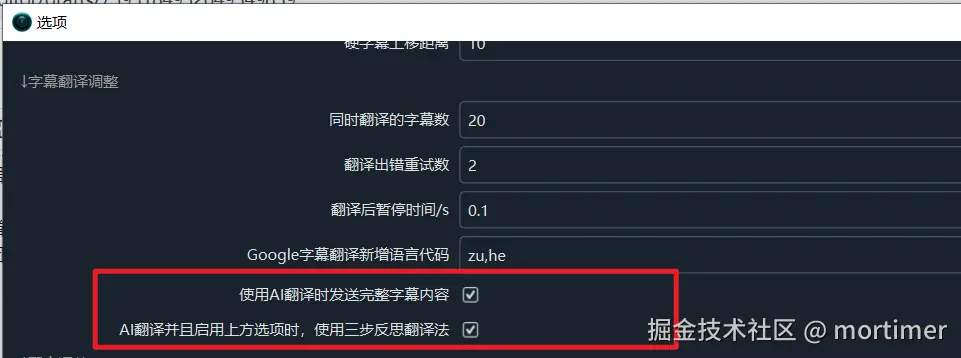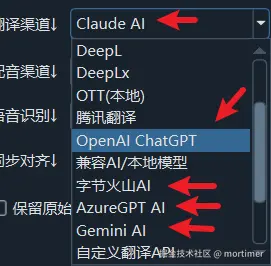Using the Three-Step Reflective Translation Method
Using AI translation tools (such as ChatGPT, Gemini, etc.) for subtitle translation can significantly improve translation quality by leveraging contextual information, although minor issues like empty lines may occasionally occur.
Video Translation v3.12 introduces the "Three-Step Reflective Translation Method" to further optimize AI translation results. This method requires the AI to first perform a literal translation, then reflect on the shortcomings of the literal translation and propose improvements, and finally re-translate the original text based on the suggestions. These three iterative steps significantly enhance translation accuracy.
However, the "Three-Step Reflective Translation Method" has some limitations: first, it consumes more tokens; second, it demands higher intelligence from the AI model, as less intelligent models often produce disorganized outputs. Therefore, this feature is only supported by online large language models like OpenAI ChatGPT and Gemini, and not by local small models.
How to Enable:
Step 1: Enable Advanced Options
In the menu bar, click "Tools" -> "Options" -> "Advanced Options," then check the two options as shown in the image below.

Step 2: Select an AI Translation Channel
In the "Translation Channel" options, choose a channel that supports AI translation, such as "OpenAI ChatGPT/Gemini/Claude AI/302.AI."

Step 3: Choose an Appropriate Model
When selecting a model, for the ChatGPT series, be sure to choose "gpt-4" or "gpt-4-mini" models and avoid using "gpt-3.5." This is because the higher the model's intelligence, the better the "Three-Step Reflective Translation Method" works; conversely, less intelligent models may produce meaningless results.
In summary, combining the "Three-Step Reflective Translation Method" with a suitable AI model can greatly enhance the quality and efficiency of subtitle translation. Please choose an appropriate model for the best results.
